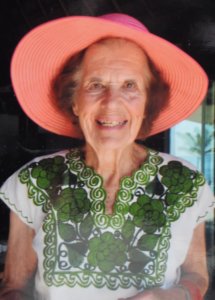Mr. Saity (written 30 years later), Part 2

My husband, John, and I paused on Park Avenue in front of Mr. Saitys’ store with its enticing American Indian and Tibetan jewelry. I pressed the buzzer and Mr. Saity unlocked the door.
He welcomed us as if we were former friends, although we’d never met, and began sharing the history of his jewelry. He took a prominent piece from a case.
“These turquoise mines are closed now and no more veins of this deep color remain. Look at the quality of the stones and how they match, and the unusual spider webbing. On this piece the carving of these figures is so expert—the faces look so human, the proportions of their bodies so perfect; this is my absolute favorite. And this huge turquoise and coral pendant is the oldest I’ve ever owned, so powerful, worn only by the healer of the tribe. These cannot be replaced.
“I have an Indian who travels by horseback into isolated areas where these people live. He brings me one-of-a-kind pieces. Try this one on.”
The healer’s heavy pendant felt light around my neck in spite of its heft, as if the energy were emanating from the stones.
“When I came to the United States, the Indian jewelry was the nearest to those in my culture. So I got interested in the tribes out West and began to educate myself about their pieces.” At this point John left to meet a friend.
“During the war my family, who were Farsi, and I had gone to Israel where we would be safe. I then had to serve in the army. I was also a newspaper correspondent and wrote two books, as well as doing trading. But I shouldn’t be telling you this, it’s so personal and why would you be interested?”
“But Mr. Saity I am a psychologist and listen to people’s stories daily. I never tire of them.” I wondered about his difficulty walking. He must be in pain—perhaps a war injury. It seemed intrusive to ask.
“Then my visa came for the U.S., and I couldn’t refuse that opportunity. I had waited several years, as few are given. I started this business and have the finest collection anywhere. I am eager to have the museums acquire them so the artists’ history will be preserved. Here try this piece on. It will suit you.”
It was a Tibetan necklace with delicate coral and turquoise stones set in silver. I felt as if it belonged on me. I asked him the price: $1,800. I gasped but agreed it looked very fine. “Mr Saity it is too expensive for me, but I promise to visit you on my next trip.”
“But no, I want you to take this Tibetan piece. You MUST have it. You cannot leave without it. The turquoise is from Derg and the coral from the Coral Sea. The stones are very old and the silver work is unusually fine. This is for you. I want to give it to you as a present.”
There was an urgency in his voice. “You are a lovely person, and very powerful. You remind me of my beloved wife. This was her favorite piece. You have made my afternoon and I feel strengthened by your visit. I feel I know you well.
“Please, I insist. It is my great pleasure and I know the piece will give you protection because it has forceful qualities.” His voice became stronger, and I felt trapped.
I finally said: “I am greatly honored and will treasure it. But you must promise to let me know if you ever want it back. I will send it immediately.”
“No, there is no question of that. I will think of you wearing it—that is enough for me.”
I walked down Park Avenue embellished by the necklace, but puzzled: Had I somehow taken advantage of him and would he regret it later? A compliment from a stranger followed. John met me at Grand Central Station to take the bus to the airport. “What a gorgeous piece you are wearing.”
I told him the story. He just smiled knowingly and gave me a hug.
All these years later I still don’t have the answer. I realized Mr. Saity had faced unbelievable ordeals in his life—ones that might have destroyed me. Through these adversities he had learned to savor unexpected moments of connection—and to follow his heart when they arose. Most of us take a lifetime to learn this—and some never do.
Search for your own chances to be generous and kind. Find the courage to embrace your spiritual instincts and act upon them.
Note: A few years later I read his long obituary in The New York Times and the important cultural contributions Mr Saity had made in his field. Collectors thought highly of him. The very details were just as he had reported them to me.
The first part of this story appeared in the Nov. 29 issue of The News.

